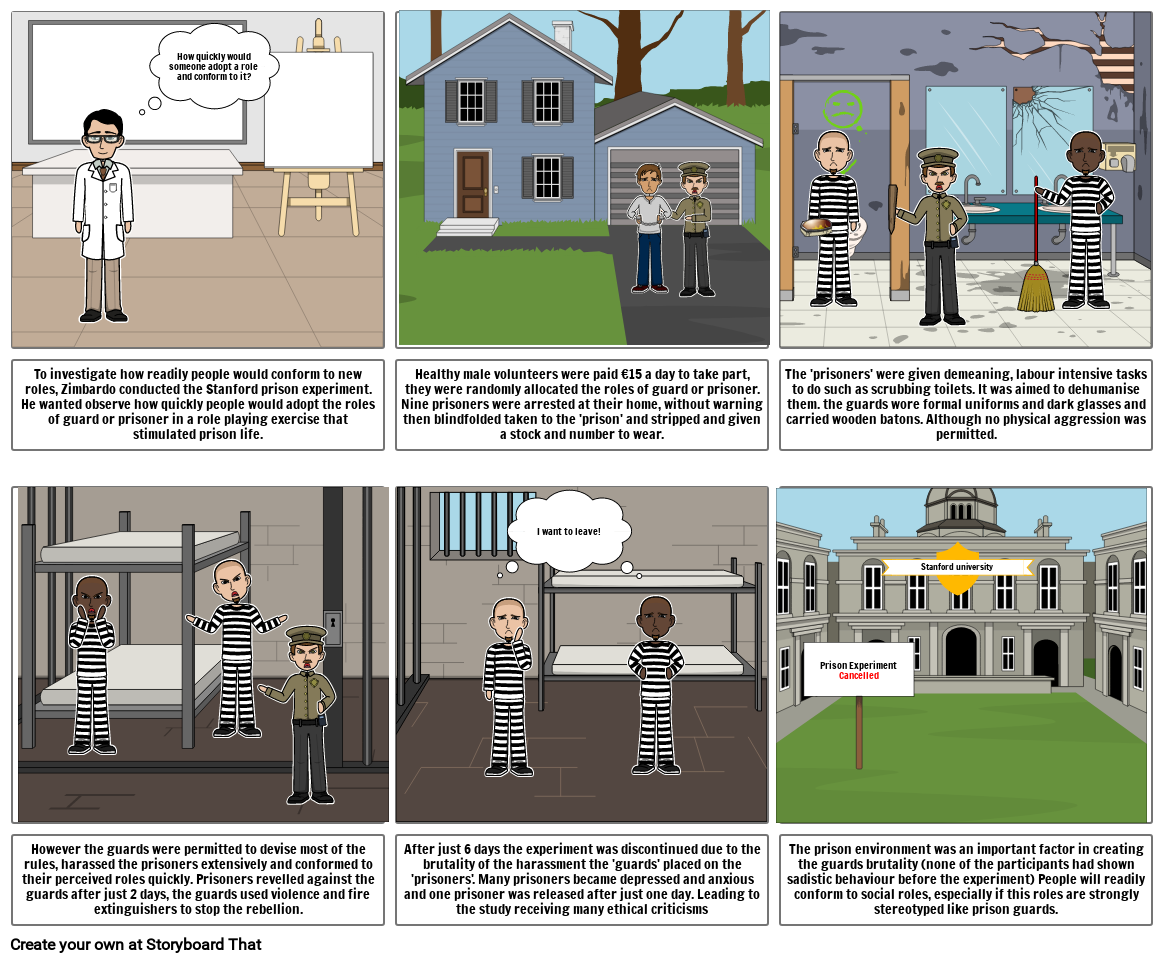Stanford Prison Experiment

Texto do Storyboard
- How quickly would someone adopt a role and conform to it?
- To investigate how readily people would conform to new roles, Zimbardo conducted the Stanford prison experiment. He wanted observe how quickly people would adopt the roles of guard or prisoner in a role playing exercise that stimulated prison life.
- Healthy male volunteers were paid €15 a day to take part, they were randomly allocated the roles of guard or prisoner. Nine prisoners were arrested at their home, without warning then blindfolded taken to the 'prison' and stripped and given a stock and number to wear.
- I want to leave!
- The 'prisoners' were given demeaning, labour intensive tasks to do such as scrubbing toilets. It was aimed to dehumanise them. the guards wore formal uniforms and dark glasses and carried wooden batons. Although no physical aggression was permitted.
- Prison ExperimentCancelled
- Stanford university
- However the guards were permitted to devise most of the rules, harassed the prisoners extensively and conformed to their perceived roles quickly. Prisoners revelled against the guards after just 2 days, the guards used violence and fire extinguishers to stop the rebellion.
- After just 6 days the experiment was discontinued due to the brutality of the harassment the 'guards' placed on the 'prisoners'. Many prisoners became depressed and anxious and one prisoner was released after just one day. Leading to the study receiving many ethical criticisms
- The prison environment was an important factor in creating the guards brutality (none of the participants had shown sadistic behaviour before the experiment) People will readily conform to social roles, especially if this roles are strongly stereotyped like prison guards.
Mais de 30 milhões de storyboards criados

